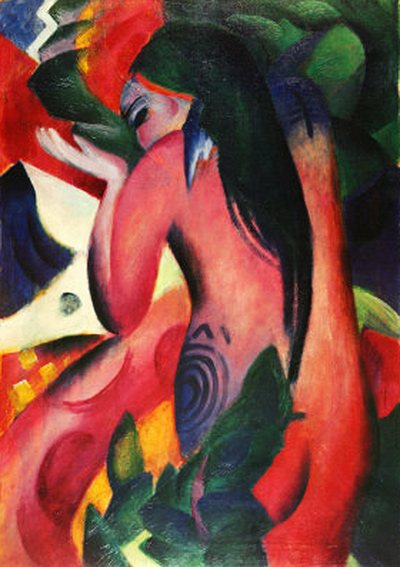The Red Woman is an oil painting on canvas that was completed by Franz Marc in 1912. It has been described as significant in that is one of Marc’s last known attempts at figure painting
After this period of painting, Marc’s work almost exclusively involved animals. Despite the subject matter of his artwork changing over time, the bold colouring and abstract shapes continued to play a major part in his work.
From Marc’s experience and influence from other artists, he had grown interested in studying the spiritual side of nature. This piece of art came two years after Marc had met Kandinsky and formed the Blaue Relter group.
Delaunay also had a great influence on Marc’s work, encouraging the use of bright colour. Marc considered blue to be a spiritual colour that could be opposed by red, representative of non-spiritual matter. These apparently opposing colours are visible in the Red Woman.
The painting was acquired by Leicester’s New Walk Museum & Art Gallery in the 1940s. Prior to this, it had been owned by the Hess family in Germany. The family fled to England and then settled in Leicester in the 1930s after being persecuted for being Jews in their home country.
A descendant of the Hess family claimed that the family were able to get the painting out of Germany due to the Nazis considering the Expressionist art to be undesirable.
The gallery gained a number of German Expressionist works from the family and in 1944 displayed them in a public exhibition. The local media praised the move by the gallery despite the background of the country being at war with Germany. The piece was again recognised in the local media in 1959 when the Leicester Mercury newspaper named it ‘Picture of the month’. It continues to be housed by the Leicester gallery.




